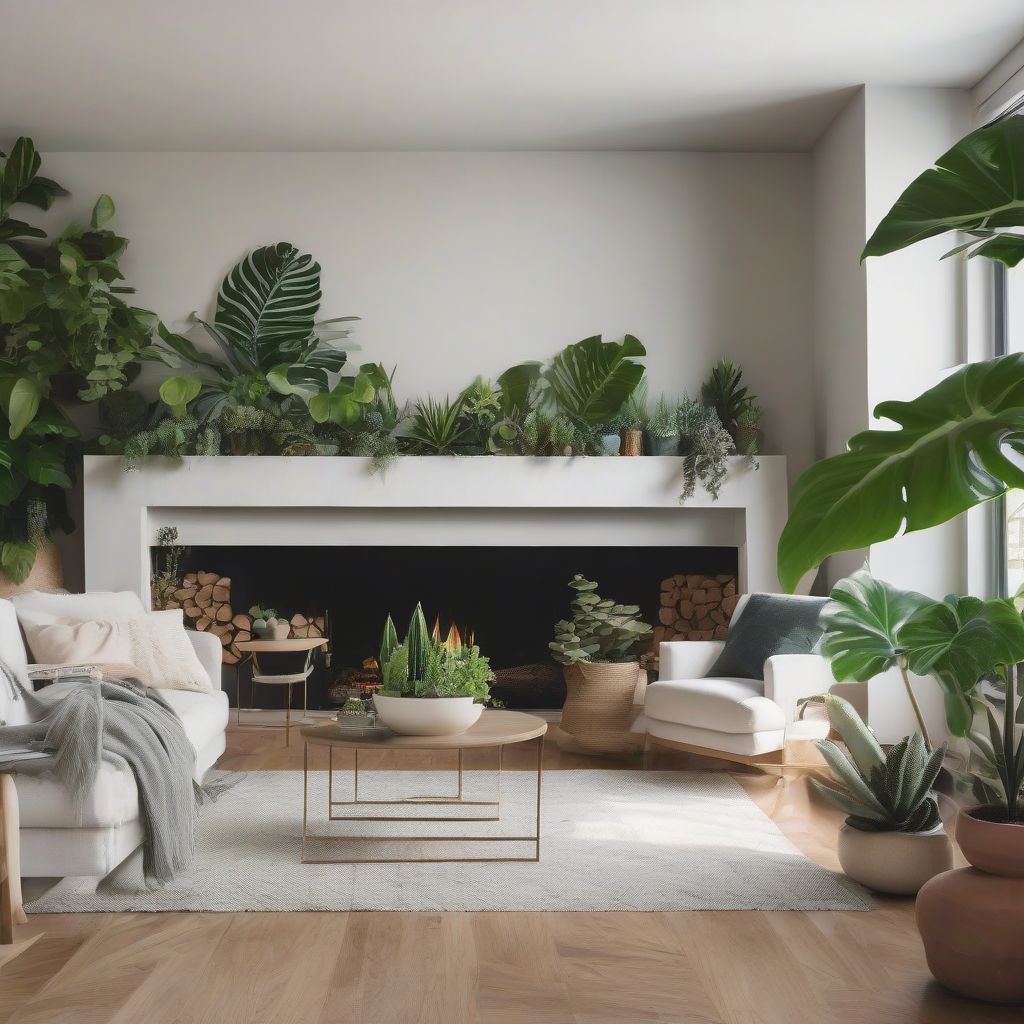Have you ever walked into a room and felt instantly calmer, happier, or more energized? While many factors contribute to a room’s ambiance, the strategic placement of plants can play a surprisingly significant role. Beyond their aesthetic appeal, plants possess an uncanny ability to transform the mood and feel of a space, making it more welcoming, vibrant, and reflective of your personal style. As a nutritionist and meal prep coach, I understand the impact environment can have on our well-being, and believe me, incorporating plants is like adding a dose of vitamins to your home decor!
Creating Harmony and Balance with Plant Placement
In the world of design, the placement of objects plays a crucial role in achieving balance and harmony. The same principle applies to plants. Think of your room as a canvas, and your plants as brushstrokes of nature.
Using Plants to Define Spaces
- Dividing a large room: Large plants like a Fiddle Leaf Fig or a Monstera can act as natural room dividers, creating distinct zones in an open-plan living space without building walls.
- Framing architectural features: Placing a row of succulents on a fireplace mantel or a trailing Pothos on a bookshelf can draw the eye to these features and enhance their visual appeal.
 Plants Defining Spaces
Plants Defining Spaces
Plants as Focal Points and Accents
- Statement pieces: A strategically placed, eye-catching plant like a Bird of Paradise can serve as a captivating focal point, instantly drawing attention and adding drama.
- Complementary accents: Smaller plants can be grouped together to create visual interest on coffee tables, side tables, or empty corners, adding pops of color and texture.
Plants and the Psychology of Space
The impact of plants extends beyond the visual. Studies have shown that incorporating plants into indoor environments can significantly affect our mood, productivity, and overall well-being.
Boosting Mood and Reducing Stress
- Natural air purifiers: Plants act as natural air filters, removing toxins and releasing oxygen, which can improve concentration and reduce stress.
- Psychological comfort: Research suggests that being around plants can lower blood pressure, reduce anxiety, and create a sense of calmness.
Enhancing Creativity and Focus
- Green is good for you: The color green is known to evoke feelings of peace and tranquility, promoting relaxation and focus.
- Biophilic design: Integrating elements of nature, like plants, into indoor spaces has been proven to boost creativity and productivity.
Choosing the Right Plants for the Right Place
Not all plants are created equal when it comes to their impact on ambiance. Consider these factors when choosing and placing your plants:
Light Requirements
- Low-light lovers: Plants like Snake Plants, ZZ Plants, and Pothos can thrive in dimly lit corners, adding life to areas that don’t receive much natural light.
- Sun worshippers: Succulents, cacti, and flowering plants often require bright, indirect light and will do well near south or west-facing windows.
 Light Requirements for Plants
Light Requirements for Plants
Plant Size and Growth Habit
- Vertical interest: Tall, slender plants like a Bamboo Palm or a Corn Plant can create a sense of height and drama in a room with low ceilings.
- Trailing beauties: Cascading plants like English Ivy or Spider Plants can soften the edges of shelves or cabinets, adding a touch of elegance.
Caring for Your Plants for Optimal Ambiance
A well-cared-for plant is a happy plant, and a happy plant contributes to a more positive and inviting ambiance.
Watering and Feeding
- Observe and adjust: Pay attention to your plants’ individual watering needs. Overwatering can be just as detrimental as underwatering.
- Nourish for growth: Use a balanced fertilizer during the growing season to provide your plants with the nutrients they need to thrive.
Potting and Repotting
- Room to grow: Choose pots that are appropriately sized for your plants, allowing ample space for their roots to spread.
- Fresh starts: Repot your plants into fresh soil every 12-18 months to replenish nutrients and encourage healthy growth.
Conclusion
The strategic placement of plants is more than just a design trend; it’s an opportunity to infuse your living spaces with life, vibrancy, and a touch of natural beauty. By understanding the impact of plant placement on room ambiance, you can transform your home into a sanctuary of peace, productivity, and positive energy. So, embrace your inner plant parent and watch as your space transforms into a reflection of your own personal style and well-being!
No products found.
